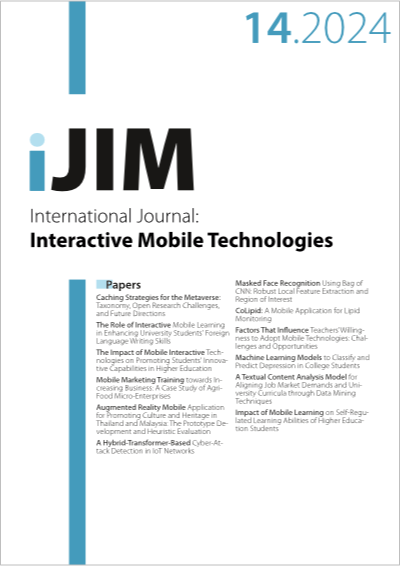A Hybrid-Transformer-Based Cyber-Attack Detection in IoT Networks
DOI:
https://doi.org/10.3991/ijim.v18i14.50343Keywords:
Cyber-security; IoT; Deep Learning; transformer; Network.Abstract
The concept of the Internet of Things (IoT) is significant in today’s world and opens up new opportunities for several organizations. IoT solutions are proliferating in fields such as self-driving cars, smart homes, transportation, and healthcare, and new services are constantly being created. Over the previous decade, society has seen a significant expansion in IoT connectivity. In reality, IoT connectivity will expand in a variety of domains over the next few years. Various problems must be overcome to permit effective and secure operations. However, growing connections increase the potential for cyber-attacks since attackers can exploit the broad network of linked devices. Artificial intelligence (AI) detects and prevents cyber assaults by constantly developing and adjusting to new threats and weaknesses. In this study, we offer a novel cyber-detection model for IoT networks based on convolutional neural networks (CNN) transformers. The study aims to enhance the system’s ability to identify and detect cyberattacks, new and sophisticated assaults, and its performance. The experimental study findings, using a new cybersecurity CICIoT2023 dataset, show that the CNN-Transformer model can detect IoT hazards with an overall accuracy of 99.49%. In identifying hazardous activity, MLP accuracy is 99.39%, while XGBoost-pipeline accuracy is 99.40%.
Downloads
Published
How to Cite
Issue
Section
License
Copyright (c) 2024 Imad Tareq, Bassant M. Elbagoury, Salsabil El-Regaily, El-Sayed M. El-Horbaty

This work is licensed under a Creative Commons Attribution 4.0 International License.



